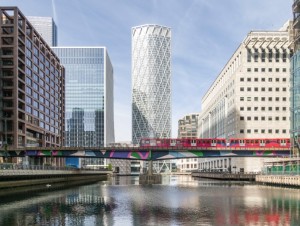Throughout history we’ve built a number of significant towns and cities near rivers. They were essential spots for societies, providing resources and supporting thriving economies by allowing easier movement of goods. Today we’re building more and more homes near rivers in various parts of the UK. However, it can create various challenges. We want to have a closer look here to explore the main factors to keep in mind when building in these settings, including floodplains. Then, if you need help from top architects in London, you can rely on us.
Changes
The single most important thing to keep in mind is rivers give every area a unique topography. There is a complex ecosystem at work, meaning things change, grow, and evolve over time. There can be a huge amount of movement, from the water, the ground, plants, and more. All of this has a massive impact on the typology of nearby buildings.
If you are building near rivers, you need to respect the river’s behaviour. The focus should be on adaptability, managing resources effectively, and using the right materials.
Seasonal flooding
 One of the major problems if you want to build near rivers is the land can change dramatically in rainy seasons. Often there will be a hydrological cycle where the land is dry and stable for periods and then submerged and unstable afterwards. As a result, there can be a huge amount of movement here.
One of the major problems if you want to build near rivers is the land can change dramatically in rainy seasons. Often there will be a hydrological cycle where the land is dry and stable for periods and then submerged and unstable afterwards. As a result, there can be a huge amount of movement here.
The most important thing to do if you are building on a seasonal floodplain is ensure flexibility. You can discuss this with us and get input from expert architects in London. Choose the right type of foundations for buildings, ensuring you allow water to pass efficiently or elevating above the surface. Think about permeable materials that allow effective drainage. Ultimately, you want the water to be able to flow away rather than obstructing it and creating floods.
Arid areas
In other parts of the world, flooding isn’t the biggest issue when you build near rivers; water scarcity is the main problem. When it is arid or semi-arid regions with higher temperatures and less rain, every drop of water is vital. Therefore, the typology of the architecture must work to protect resources.
Tackling heat gain and evaporation are crucial in these areas. As a result, it’s quite common to see buildings with thicker walls, narrower streets, and more shading. It is a good idea to choose materials with the right kind of thermal mass. Additionally, there is a focus on effective drainage, water storage, and filtration. These water management elements are a vital part of the infrastructure and have a big impact on the architecture.
Temperate rivers
Finally, we have countries like the UK that traditionally have a temperate climate. Rivers typically are more stable here as extreme low or high temperatures are rarer. It makes it a little easier to build near them, but it is still vital to think about how they change over time. There will likely still be some periods of seasonal flooding, as well as issues such as gradual erosion. Interestingly, the goal in many areas with temperate rivers is to create cultural and ecological assets to manage and restore the environment while providing more benefits for residents.
Discuss your plans with top architects in London
Coffey Architects understands that the key to successful architecture is to consider the setting and environment. You can get the most impressive results if your design aligns with the area’s rhythm. Think about how things move and change, including water and the ground. Ideally, make sure buildings can adapt to the changes instead of inhibiting them and causing problems.
We appreciate this can be a very complex topic, especially if you look at building near rivers. We’d love to help if you need advice. So, get in touch and work with some of the best architects in London. Our knowledge of materials and forms, plus spatial intelligence, will provide real value for your project.
